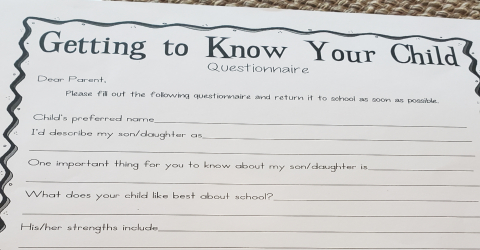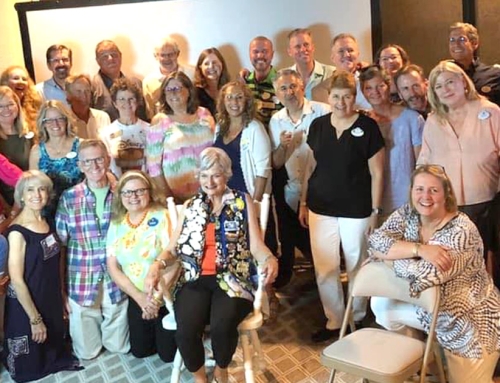 At the risk of pointing out the obvious – we can learn a lot from teachers. But I’m not talking about what goes on in the classroom. I’m talking about a quick and easy tool many teachers use to connect with students before they come to class.
At the risk of pointing out the obvious – we can learn a lot from teachers. But I’m not talking about what goes on in the classroom. I’m talking about a quick and easy tool many teachers use to connect with students before they come to class.
Among the emergency contact forms and medical information that came home on the first day of school, one stood out from the rest. It was from my daughter’s second-grade teacher and it caught my eye.
How Teachers Connect With Students
Getting To Know Your Child is a one-page form for parents to complete. It’s not asking for emergency contact info or the aftercare bus information. It’s not asking about my child’s reading level, how well she can tell time, or what her final marks were in first grade. It’s looking for the things that make my child my child.
Some of the questions: What does your child like best about school? What is one important thing you want me to know about your son or daughter? What outside activities is your child most interested in or involved in?
This proved to be a great exercise for me. Because while I’m normally hyper-focused on what my daughter will learn each school year, it was nice to take a step back and think about who she is as a person. She’s more than just someone’s student; she’s my daughter and I want to be sure her teachers know as much about her as possible.
The great thing about this questionnaire is that it has nothing to do with the learning side of the classroom. It’s not related to any kind of lesson plan and it has nothing to do with academic rigor. It has everything to do with making a connection between the teacher and their students.
After one week in her new classroom, my daughter’s eyes beamed when her teacher (who was reading the class a story about the World Cup soccer games) called on her because she knew she loves to play soccer.
We Can Do This in Healthcare
Why can’t we do something like this in healthcare? Imagine what it would be like if we asked parents, partners or others to tell us a few things about the patient that can’t be found on the medical chart? Maybe she’s a veteran. Or he’s a world traveler. Maybe he has a dog named Bruno or she speaks four languages. And then, imagine if those things were shared on the electronic medical record or on a whiteboard in the patient’s room. How would it or could it transform the patient experience?
At first glance, this might seem trivial or insignificant, but we all have the need to be seen, to be understood, to be known.
This kind of personalized human connection doesn’t take the place of clinical excellence and expertise. It complements it. And, if it gives the patient greater peace of mind and fosters a deeper connection between them and their caregiver, I think it’s worth the time.
Personalizing the care experience is so important. How do you and your team create a personalized care experience?






Leave A Comment